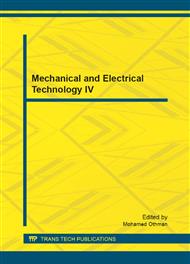p.521
p.526
p.530
p.534
p.538
p.542
p.547
p.551
p.555
Experimental Study of Cutter Wear Based on Turn-Milling
Abstract:
Based on analyzing the contact condition of the cutter and the work piece in orthogonal turn-milling machining, orthogonal cutting experiments were implemented with several machining parameters, and finally obtained conclusions about cutter wear and work piece roughness influenced by 3 factors. The biggest effect factor which affects the cutter wear is the cutter offset, the number of cutter teeth takes the second place, and the axial feed rate affects the least to cutter wear. This conclusion can be used to choose fit machining parameters in turn-milling machining.
Info:
Periodical:
Pages:
538-541
Citation:
Online since:
November 2012
Authors:
Keywords:
Price:
Сopyright:
© 2012 Trans Tech Publications Ltd. All Rights Reserved
Share:
Citation:


